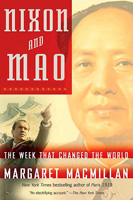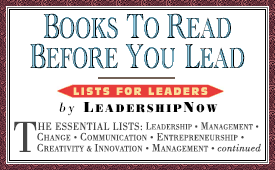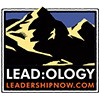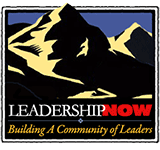
|
 |
Nixon and Mao: The Week That Changed the World Margaret MacMillan 
Format: Paperback, 448pp. ISBN: 9780812970579 Publisher: Random House Pub. Date: March 11, 2008 Average Customer Review: For Bulk Orders Call: 626-441-2024 Description and Reviews From The Publisher: With the publication of her landmark bestseller Paris 1919, Margaret MacMillan was praised as “a superb writer who can bring history to life” (The Philadelphia Inquirer). Now she brings her extraordinary gifts to one of the most important subjects today–the relationship between the United States and China–and one of the most significant moments in modern history. In February 1972, Richard Nixon, the first American president ever to visit China, and Mao Tse-tung, the enigmatic Communist dictator, met for an hour in Beijing. Their meeting changed the course of history and ultimately laid the groundwork for the complex relationship between China and the United States that we see today. That monumental meeting in 1972—during what Nixon called “the week that changed the world”—could have been brought about only by powerful leaders: Nixon himself, a great strategist and a flawed human being, and Mao, willful and ruthless. They were assisted by two brilliant and complex statesmen, Henry Kissinger and Chou En-lai. Surrounding them were fascinating people with unusual roles to play, including the enormously disciplined and unhappy Pat Nixon and a small-time Shanghai actress turned monstrous empress, Jiang Qing. And behind all of them lay the complex history of two countries, two great and equally confident civilizations: China, ancient and contemptuous yet fearful of barbarians beyond the Middle Kingdom, and the United States, forward-looking and confident, seeing itself as the beacon for the world. Nixon thought China could help him get out of Vietnam. Mao needed American technology and expertise to repair the damage of the Cultural Revolution. Both men wanted an ally against an aggressive Soviet Union. Did they get what they wanted? Did Mao betray his own revolutionary ideals? How did the people of China react to this apparent change in attitude toward the imperialist Americans? Did Nixon make a mistake in coming to China as a supplicant? And what has been the impact of the visit on the United States ever since? Weaving together fascinating anecdotes and insights, an understanding of Chinese and American history, and the momentous events of an extraordinary time, this brilliantly written book looks at one of the transformative moments of the twentieth century and casts new light on a key relationship for the world of the twenty-first century. Reviews Starred Review. Richard Nixon's 1972 visit to Beijing to open relations with Communist China was both a Cold War milestone and compelling political theater. Diplomatic historian MacMillan, author of the acclaimed Paris 1919, gives a lively account of the pomp and protocol surrounding the trip: the awkward banquets, the toasts to peace and friendship (punctuated by occasional anti-imperialist lectures), the Great Wall pilgrimages, the proletarian operas (Nixon attended The Red Detachment of Women, in which peasants and revolutionaries battle landlords). MacMillan's even better on the behind-the-scenes negotiations, as the two sides wrangle over every word of the climactic Shanghai communiqué. More than Nixon and the cloistered Mao, the central figures are Henry Kissinger and Chinese premier Chou En-Lai, tasked with finding common ground and finessing differences with subtle verbiage and winks and nods. The author fills in the background with colorful, incisive biographical sketches and a lucid history of Sino-American relations. The encounter seems to have had little impact on the issues discussed during the trip—the Vietnam war, the fate of Taiwan, relations with the Soviets. Still, MacMillan argues, it opened the door to today's necessary relationship between the two Pacific powers, and she turns a potentially dry diplomatic story into a fascinating study in high-wire diplomacy, full of intrigue and drama. Photos. (Feb. 20) —Publishers Weekly, Copyright © Reed Business Information, a division of Reed Elsevier Inc. All rights reserved.
About the Author Margaret MacMillan is the author of Women of the Raj and Paris 1919: Six Months That Changed the World, which won the Duff Cooper Prize, the Samuel Johnson Prize for Non-Fiction, the Hessell-Tiltman Prize for History, a Silver Medal for the Arthur Ross Book Award of the Council on Foreign Relations, and the Governor General’s Literary Award for nonfiction. It was selected by the editors of The New York Times as one of the best books of 2002. Currently the provost of Trinity College and a professor of history at the University of Toronto, MacMillan takes up the position of warden of St. Antony’s College, Oxford, in July 2007. She is an officer of the Order of Canada, a fellow of the Royal Society of Literature, and a senior fellow of Massey College at the University of Toronto. Table of Contents
Customer Reviews Write your own online review. Reviewer: Carl A Peden Lt Col (Ret) from Fountain Valley, CA United States Throughout the book, Ms Macmillan writes that the Chinese insisted that their pilots fly the President's airplane into Beijing and they did. Also, she incorrectly identified the airplane for Dr. Kissinger as Air Force One. This is all a lie, Colonel Ralph Albertazzie was the Presidential Pilot and I was the second in command for the flight into Beijing. The Chinese did place two crewmembers onboard for the flight, one was a Navigator that occupied the jump seat behind Col. Albertazzie and the other was a Radio Operater that kept in contact with the Chinese Flight Contrallers. Furtermore, there is no one airplane designated as Air Force One, That call sign is used on any Air Force airplane with the President onboard. If he was on an Navy or Army airplane, it's callsign would be Navy One or Army One which would identitfy that the President of the Unites States was onboard. Ms Macmillon, to my knowledge, wasn't even on the trip. Therefore, I have little faith that the words and comments discribed by her between the various people of the book is in question. I did not see where the book was written as Fiction, but apparently it was intended to be Non-Fiction. Find Items On Similar Subjects |
|

The Essential Lists BOOKS TO READ BEFORE YOU LEAD 
Grow Your Leadership Skills NEW AND UPCOMING LEADERSHIP BOOKS 
Classic Leadership Books BOOKS TO READ BEFORE YOU LEAD |
 |
| ||
 | © 2020 LeadershipNow™ All materials contained in https://www.LeadershipNow.com are protected by copyright and trademark laws and may not be used for any purpose whatsoever other than private, non-commercial viewing purposes. Derivative works and other unauthorized copying or use of stills, video footage, text or graphics is expressly prohibited. |
||